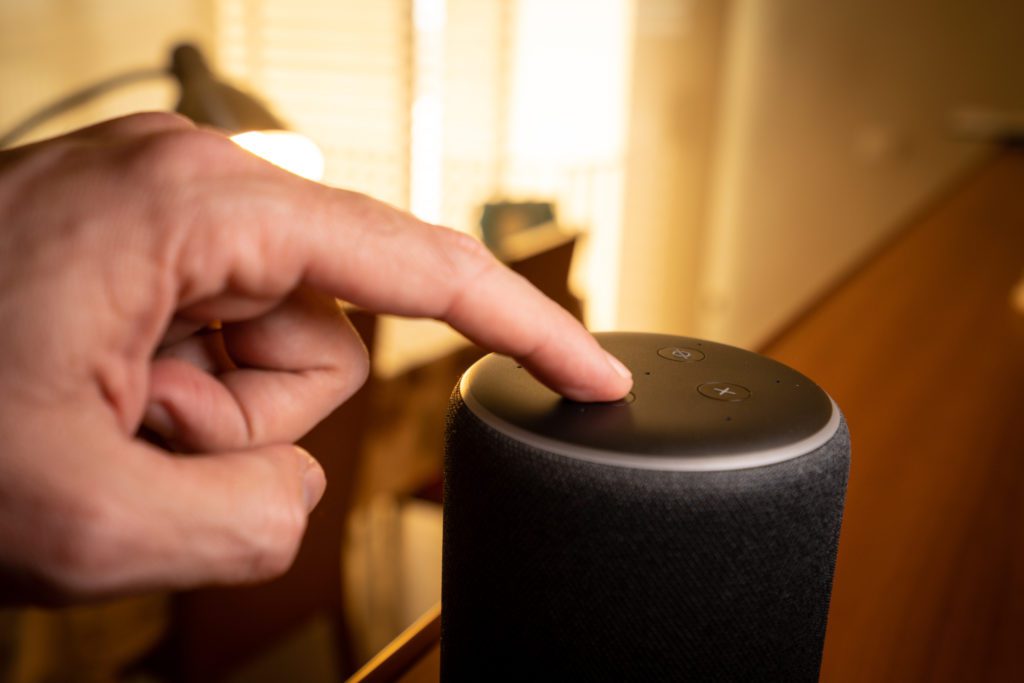The interior design industry continues to be the pioneer in the adoption and scaling of emerging technology.
Interior designers are embracing the latest technologies to stay relevant in the market, increase productivity and consumer satisfaction, convenience, while also providing endless design options. Here are some must-haves for both seasoned and upcoming interior designers.
#1: Soundproof Blinds
Decorative window treatment options are endless. In the past, the use of blinds by interior designers focused only on one practical aspect: darkening a room. However, nowadays, blinds can do much more. They can now mask noise and have become better known as soundproof blinds.
Soundproof blinds are designed to provide homeowners with the utmost privacy. Of particular importance to urban residents, they dampen exterior sounds. One popular option is the dual-cell, or honeycomb, shade.
Built into side-tracks affixed to existing window trim. They significantly reduce the exterior sound entering a room, without the insulation and soundproofing.
#2: Switchable “Smart” Glass (Privacy Glass)
Switchable smart glass is a special glass that changes from transparent to opaque when with a switch flip. It’s an upscale, high-tech privacy option for decorators that can eliminate the need for blinds. Interior designers recommend this tech innovation for its ability to provide thermal, sound, and solar insulation benefits.
By using switchable smart glass, clients can control the flow of light between rooms or outside sources and can dial in preferences ranging from fully translucent to near black-out conditions. This glass is perfect for spaces that need privacy, such as bathrooms, changing rooms, conference rooms, and safe-deposit rooms.
To make a room more aesthetically pleasing, interior designers can even use colored switchable glass.
#3: 3D Wallpaper
Wallpaper is no longer just a coating. They now come in a 3D version. 3D wallpapers give the illusion of added depth and an element that will not go unnoticed wherever shown. 3D wallpaper has endless pattern options that customize to blend with the spaces’ decors using stereoscopic effects that can mimic depth, texture, and visual expansion.
This allows designers to innovate and design materials with varying textures for the surface. These include faux suede, metallic, or cork. Designers can use any material for design, ensuring versatility, longevity, and varying visual effects.
This wide variety lends itself to endless possibilities when decorating any residential, corporate offices, or commercial premises.
#4: Design Apps
3D design apps are becoming increasingly popular with interior designers. Some of these design apps allow you to create 3D models of a room and then decorate it. These are less expensive and easier to use than virtual and augmented reality software. A few of these apps include:
- TapMeasure: An Augmented Reality (AR) unit that interior designers can use to scan spaces. TapMeasure gives accurate floor plans and builds premium-quality 3D models of the plans. It has inbuilt tools such as ‘quick measure’ and ‘smart level’ that aid designers in measuring surfaces and place any wall installations correctly.
- Carpetright Visualiser: Carpetright visualizer helps to determine the best type of flooring. This software helps the designer envision how a room will look with different types of flooring, whether it be tiles, wood, vinyl, etc.
- Augment: This software enables an interior designer to try out furniture and other decorative items in a 3D enhanced virtual room. Augment also has features such as color customization, allowing a designer to virtually try out different furniture colors.
Other notable design apps include SketchUp, RoomSketcher, and Virtual Architect.
#5: Virtual Reality/Augmented Reality
Designers historically relied on sketches and eventually computerized imagery to draft and finalize design projects, however, there has been a rise in innovative technology incorporating the use of 3D, VR, and AR into interior design.
Interior designers are using virtual and augmented reality to create virtual spaces to show their clients how different color schemes and textures will work in different areas and rooms. It allows designers to plan for future room layouts without actually having to take the time to build them out.
The clients also have the ability to move through the room to see how their future space will look.
#6: Point Clouds
Point clouds, produced by specialty software or 3D scanners are one of the best innovations for interior designers. Point clouds use measurements of many points on the external surface of objects around them to provide data points that represent a 3D object.
In essence, a laser scanner captures a photo and the output is saved as coordinates that are converted into digital models. This cutting-edge technology replaces the need for tape measures, photographs, drawings, and other antiquated methods of manual data gathering at a site.
Through the use of point cloud technology, interior designers now have the ability to show their design plans remotely, and online through the software as virtual elevations, walk-throughs, animations, and/or 3D models.
#7: Smart Homes

Smart homes are a perfect example of how design and technology can create convenient, comfortable, and efficient homes. Designers can build panel controls into rooms and hide electronic elements that might otherwise detract from design schemes.
Clever integration means nearly invisible automation, with touchscreens that blend into walls and sensors and wireless charging built into furniture.
A smart home encompasses different smart equipment, for example, which range from smart locks, smart TV, smart stove, Siri, Amazon Alexa, Google Assistant, Wink Hub, and Samsung smart things hub, can offer functionality in a home.
With a smart home, one can easily lock the gate from the car, turn off the stove on your way home or command Alexa to call your assistant. Interior designers can tap into smart homes to ensure energy efficiency in homes, improve privacy, more safety, and comfort.
#8: Switchboard Automation
Sustainability and environment conservation are the main mantras in the green movement campaign, and interior designers can be part of this movement by adopting the switchboard automation. With the device, one can monitor the power consumption of devices in a home.
The switchboard can switch off electricity or heater in a room if no one is home using motion or thermal sensors. Further, one can set the optimal temperature in a room to enhance comfort and convenience. The solar panels can be integrated into the switchboard to utilize solar energy.
For optimal energy generation, the solar panels can be programmed to move at different angles as the sun shifts, thus optimizing energy generation and consumption.
Newer technologies are opening up a new world of possibilities as well as various new ways to decorate a space.
Interior designers are beginning to understand the necessity to immerse these latest innovations into their clients’ spaces—as it ensures each room is not only stylish, functional and sustainable, but also convenient and smart.
Justin Schwartz is the CEO of Sage Audio Video Technology.
This article originally appeared on our sister publication Commercial Integrator‘s website.







